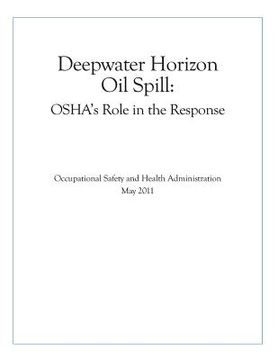Synopsis "Deepwater Horizon Oil Spill: OSHA's Role in the Response"
On the night of April 20, 2010, the Deepwater Horizon rig, located 45 miles off the coast of Venice, Louisiana, exploded and caught fire, resulting in the deaths of eleven workers. The rig sank on the morning of April 22, and on April 23 crews discovered oil leaking from the well's riser and drill pipe. Oil began reaching shore in late May.During the peak of the operations, more than 47,000 men and women were involved in responding to and cleaning up the oil spill each day. This included more than 42,000 response and cleanup workers employed by BP and its contractors, 1,600 members of the National Guard, and more than 2,400 federal employees. The area of operations spanned the coastline from Louisiana to Florida, as well as offshore operations from the shoreline to the site of the release; 6,400 vessels were involved in the operations.Many workers faced potential exposure to weathered oil, oil byproducts, dispersants, cleaning products, and other chemicals used in the cleanup process. Depending on their assignments, these workers also faced potential hazards from extreme heat, slips, falls, material handling, drowning, confined spaces, struck-by, fatigue, loud noises, sharp objects, and electrical hazards, as well as bites from insects, snakes, and other species native to the Gulf Coast region.The Occupational Safety and Health Administration (OSHA) was part of the coordinated federal response to ensure that workers were protected from these hazards. The U.S. Coast Guard, the National Institute for Occupational Safety and Health (NIOSH), the National Institute of Environmental Health Sciences (NIEHS), the U.S. Environmental Protection Agency (EPA), other government agencies, and BP worked together to protect workers involved in the response. As a member of the National Response Team (NRT), the Department of Labor (DOL), through OSHA, provided guidance and safety and health expertise to the Coast Guard at the National Incident Command, the Unified Area Command (UAC), and the local incident command posts (ICPs)/unified commands. (See Appendix A for a description of the federal government's National Response System and Incident Command System/Unified Command.) OSHA's role in the Unified Command (UC) was to monitor the health and safety hazards facing workers involved in the oil spill response. OSHA continually monitored and evaluated BP's efforts to ensure that BP and its contractors were protecting workers from the hazards associated with their response and cleanup work.

